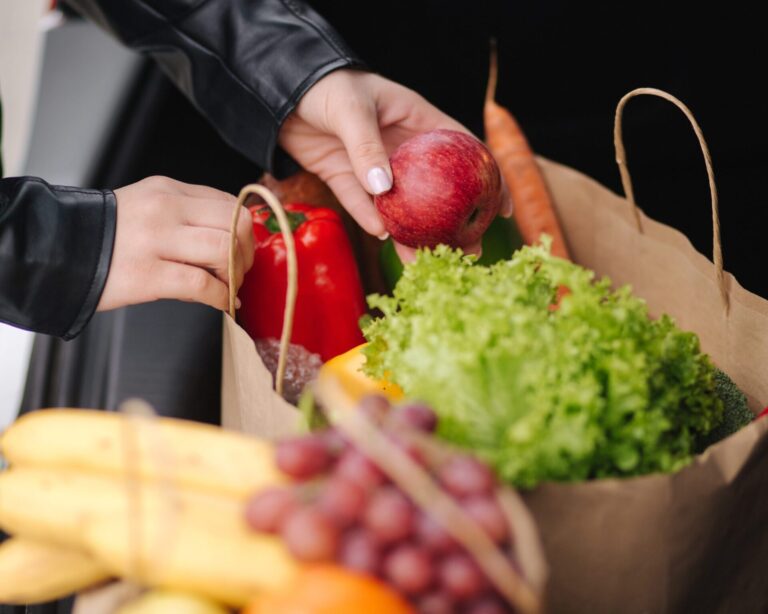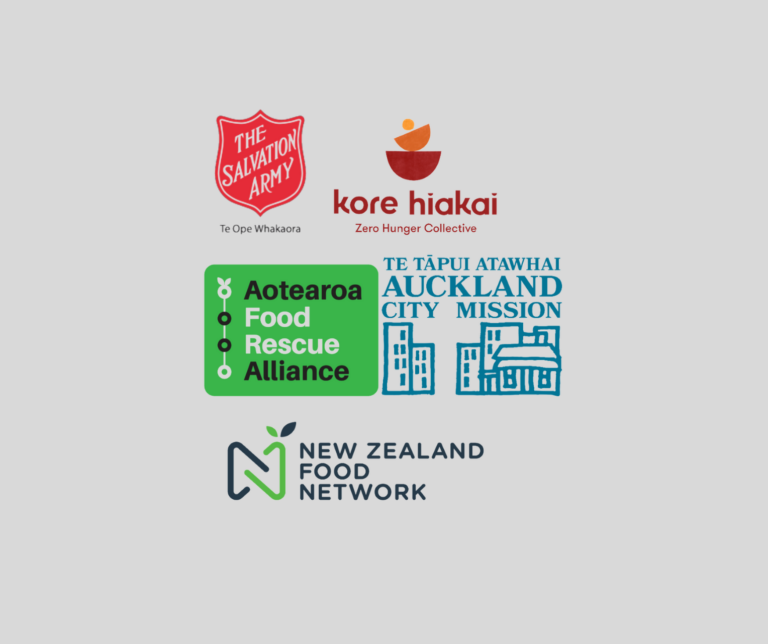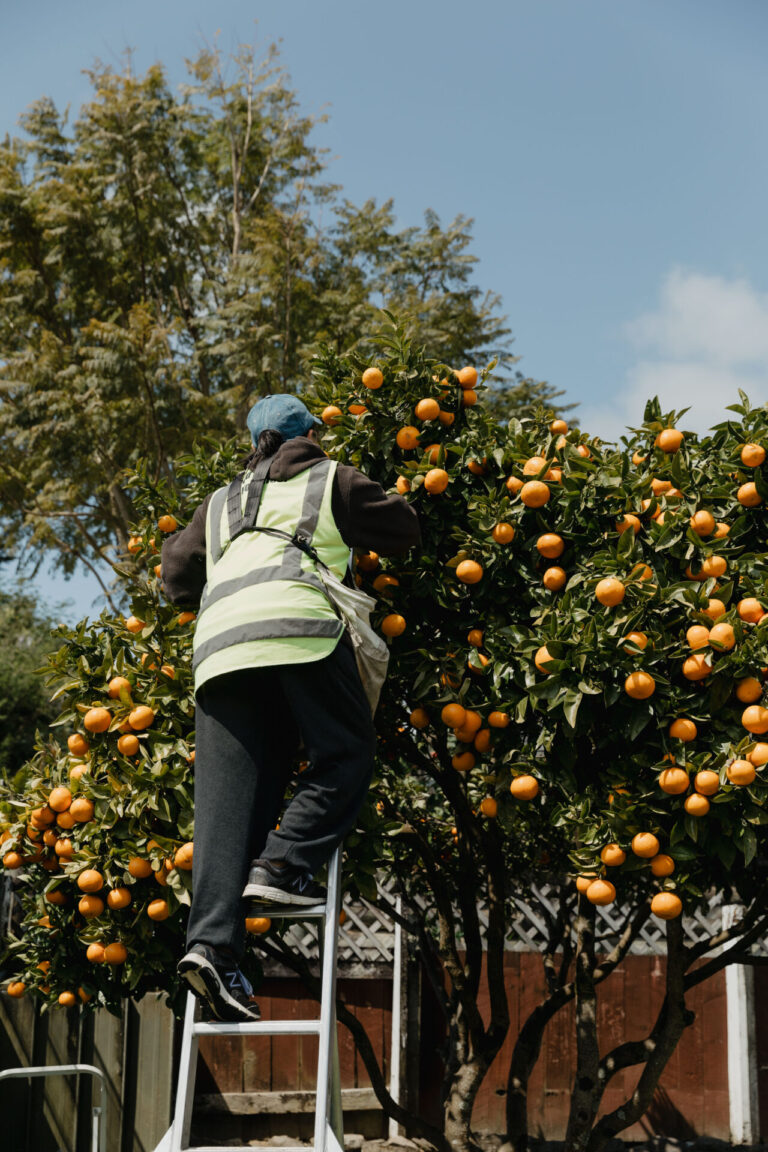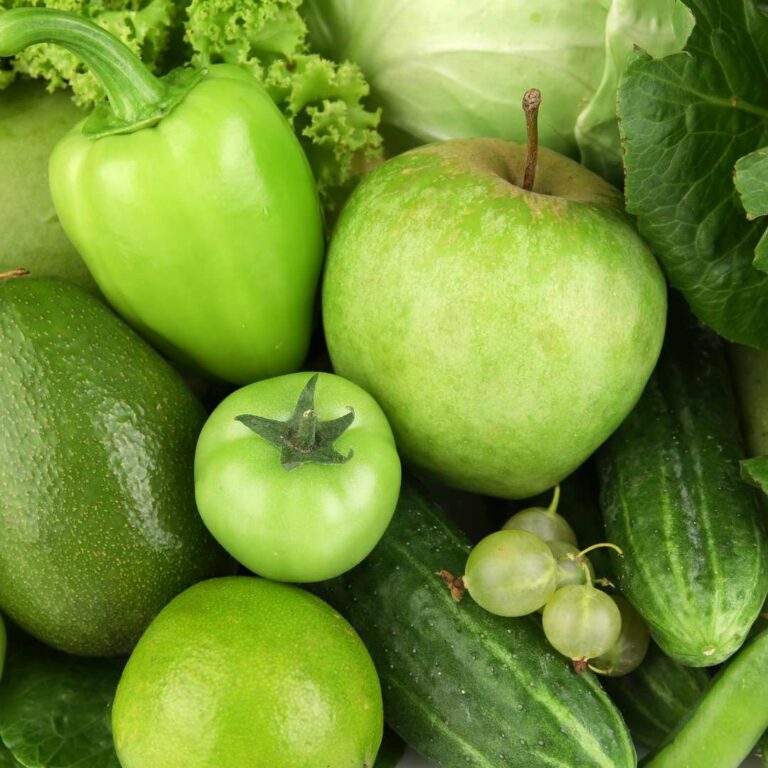Surplus to sustenance: A second harvest pilot in Te Puke
A collaboration between The Hub Te Puke and Plant and Food Research of the Bioeconomy Science Institute to rescue surplus fruit
In Te Puke, the heart of New Zealand’s kiwifruit country, a new collaboration is transforming surplus fruit into fresh kai for the community. Plant and Food Research, now a Group of the Bioeconomy Science Institute (BSI), has a long-standing practice of sharing produce with food banks and food rescue groups across the region. In early 2025, this commitment deepened through a formal partnership with The Hub Te Puke, a food rescue organisation and community centre serving the Bay of Plenty, to trial second-harvest kiwifruit picking. Staff from the Kiwifruit Breeding Centre at Te Puke (a 50:50 joint venture between Plant and Food Research and Zespri International Ltd.) also supported the new initiative.
A Proud History of Supporting Communities
Scott Nelson, Manager at The Hub Te Puke, explains, “We’ve always seen the value in rescuing good food, and second harvest fits naturally with what we do. It’s about connecting local resources to people who need them, while supporting our volunteers and community networks.”
Te Puke is one of Plant and Food Research Group’s 14 sites across Aotearoa, working to improve the value and productivity of crops such as kiwifruit, grapes, apples and cherries. As a science organisation, food safety and health and safety are taken very seriously. A food safety sub-committee must approve any public donations to ensure quality and fitness for consumption.
Roger Robson-Williams, Chief Sustainability Officer at Plant and Food Research Group of the BSI, says, “We have always encouraged our staff to pick and share surplus fruit with local groups. This pilot takes that a step further, with a clear process, good health and safety practices, and a strong partnership with The Hub’s volunteers. It’s a straightforward way to see surplus food put to good use, and the structure helps ensure it’s a positive and safe experience for everyone involved.”
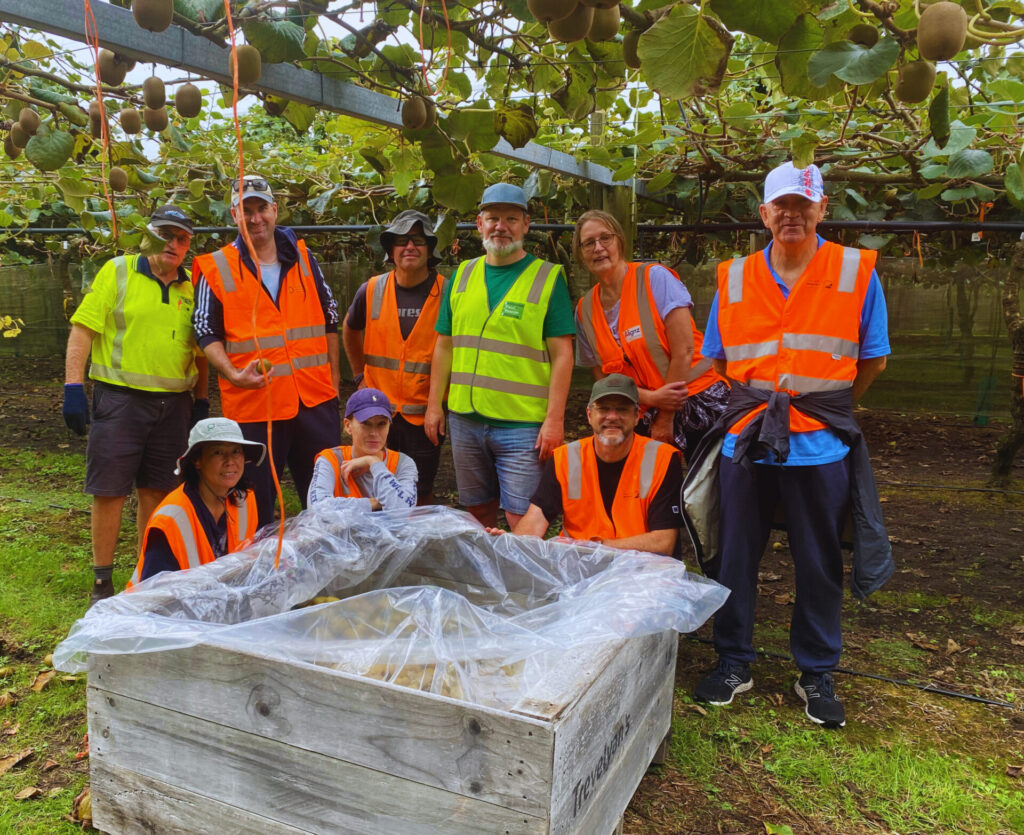
The First Pick
On 9 April 2025, the pilot’s first picking event got underway. Health and safety were front of mind from the start, with Plant and Food Research Group staff leading a detailed orchard induction. Volunteers learned about potential hazards like uneven ground and low-hanging vines, and the Plant and Food Research Group team guided them through hygiene and picking techniques to protect the fruit. Pink ribbons marked the 27 vines approved for harvesting, helping the new volunteer team know exactly where to pick.
Nine volunteers, none of whom had picked kiwifruit before, got stuck in. “It was amazing to see everyone so engaged and careful,” Scott says. “In under two hours, we harvested 800 kilograms of fruit, which we transported to The Hub the same day with support from a local transport company.”
Every bin was lined, documented and labelled with origin, quantity and use-by details, following strict kiwifruit industry safety regulations. Clear communication and step-by-step guidance made the day run smoothly.
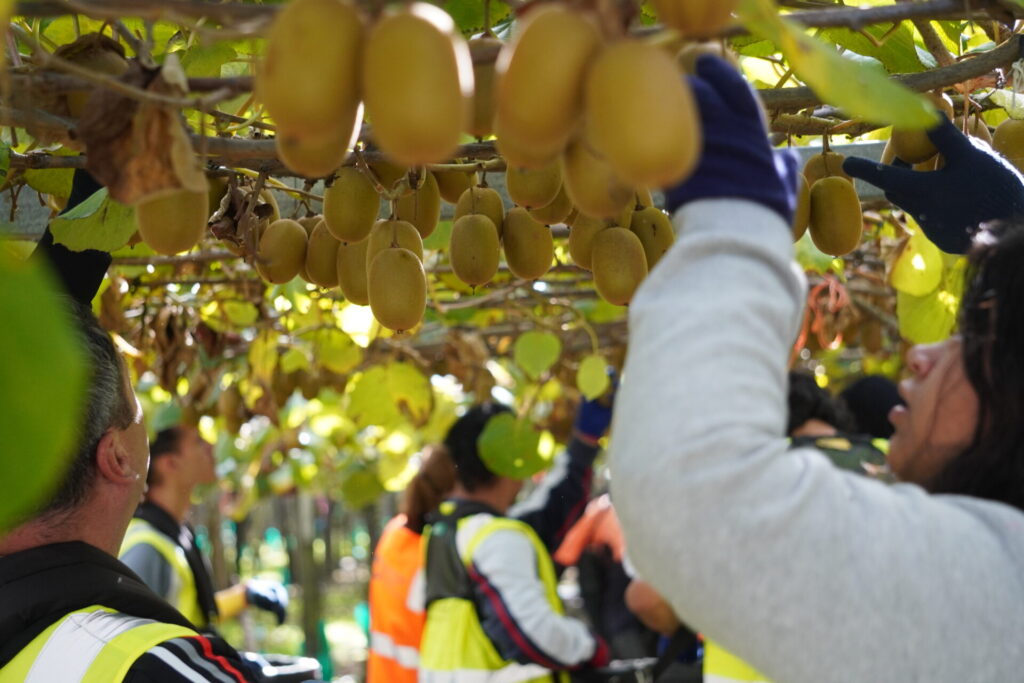
Looking Ahead
A second kiwifruit harvest is also now complete, though the third had to be called off due to weather issues. “There are always a few hurdles. Peak kiwifruit season can make it harder to find volunteers, and the weather does not always cooperate,” says Roger. “But we are learning, adapting, and figuring out what works best.”
It is a partnership that benefits everyone, with less fruit going to waste, more fresh kai for local whānau, and a practical model for how research institutions and community groups can work together to nourish our communities.
Learn more about how you can get involved in Second Harvest here.

